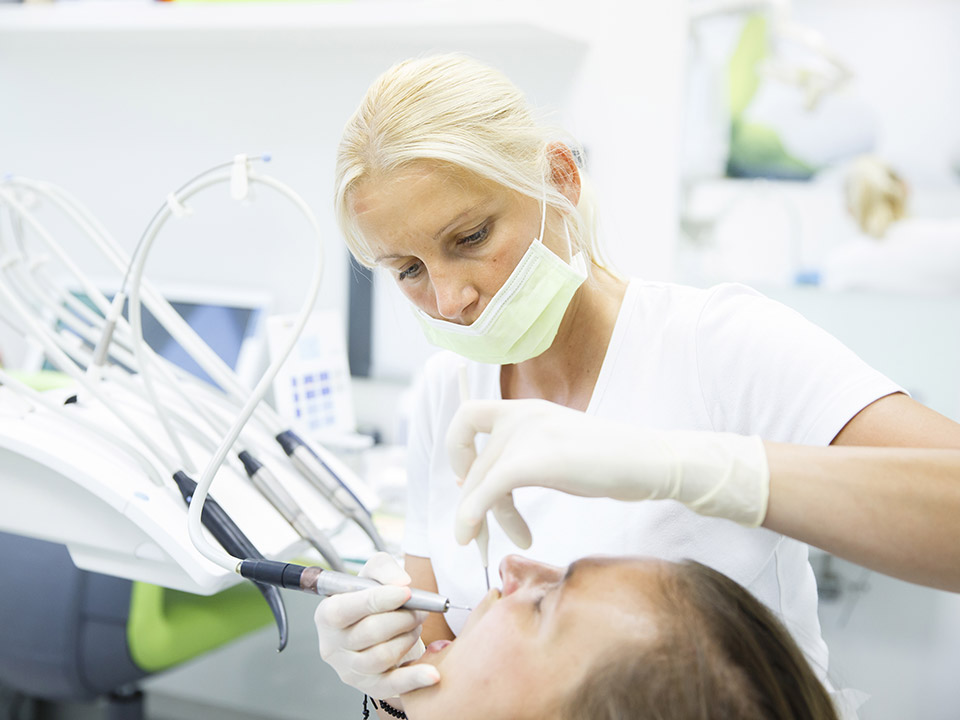Having a good smile starts with taking good care of your teeth. With a genuine smile, you appear charismatic and bold. A beautiful smile can also boost your self-confidence and invite more people to you. Unfortunately, there are times when you might suffer one or two dental problems that makes this imagination unattainable.
If you find yourself in such a situation, there are some basic dental procedures you can opt for to treat your dental problems. Such procedures can also correct tooth deformation. Some common dental procedures include:
Bonding
This dental procedure is used for repairing discolored, decayed, fractured, or chipped teeth. If you have gaps between your teeth, your dentist may correct them with bonding. The procedure is performed by forming a paste with composite resin (a plastic).
The dentist then tints the mixture to suit your teeth color. After tinting, he adds several layers of resin to the tooth. It’ll remain a paste until exposed to laser or ultraviolet light, where it’ll be hardened.
The surface may look rough after hardening. Thus, the dentist polishes and shapes the resin material so it looks smooth and more natural. Bonding can be performed for the aged and the young. For older people, it can be used to build their old teeth to look younger.
Bridges and Implants
Bridges and implants are procedures for replacing a missing tooth or teeth. They are artificial teeth held in place with the aid of surrounding teeth. On the other hand, dental implants are artificial roots that help to support replaced teeth. It provides the replaced teeth with a better rigidity, preventing them from falling off.
When a patient loses a part of their teeth, implants are usually one suitable option that can help. It helps the patient to regain their beautiful smile and their ability to chew. By filling the gap of the missing tooth, this procedure prevents other teeth from shifting.
A dental implant is usually carried out by inserting tiny metal posts into the jawbone beneath the gum; thus, it requires minor surgery. Within a few months, the implant will fuse to the surrounding bones, and the patient’s missing tooth will be restored.
Invisalign
This orthodontic treatment is used to help patients with mild to moderate misalignment achieve more attractive teeth set. In other words, Invisalign treatment helps to align the teeth, using a clear plastic aligner tray.
Invisalign treatment requires the patient to wear the plastic aligner trays for about 20 hours a day. After that, the trays will be removed, leaving behind well-aligned teeth. Since this procedure doesn’t require glued brackets or connected wires, the patient can floss and brush at ease without fearing losing anything.
Crowns and Caps
If a patient’s tooth is broken, decayed, misshapen, or stained, dentists often opt for crowns and caps to fix the problem. It is a cover that sits over the tooth and makes it more beautiful. For this procedure to be completed, patient have to visit the dentist more than once.
Crowns are made of different materials, including metal, acrylic, or porcelain. However, some crowns are a mixture of porcelain and metal. If the affected teeth are in the front, all-porcelain crowns are usually preferred because it looks more natural. On the other hand, in cases where strength is required, like the teeth at the back of the mouth, porcelain bonded to metal is a better option. This is because metals have better strength. The teeth are usually subjected to anesthesia before carrying out the procedure to ensure that the patient doesn’t feel any pain.
Braces
Braces are an orthodontic treatment for correcting tooth misalignment. The procedure is usually performed by using glue to attach brackets to each tooth. All brackets are further held together using wire ties or rubber.
The patient might feel some discomfort during this procedure, especially when the braces are first fitted and while it’s being adjusted. The braces may also make the patient feel discomfort for a while, but in such a case, there’s a relief wax that can help. After performing this procedure, it is better to take soft meals to avoid further discomfort.
The principle behind this technique is that the attached brackets will provide gentle pressure on the misaligned teeth and push it to where it should be.
Extractions
If a patient suffers severe tooth damage, extractions are usually opted for. As the name sounds, it involves extracting the damaged tooth using orthodontic treatments. Some major reasons why a tooth may be extracted include a crowded mouth, infection, or the risk of infection. In the case of infection, such a tooth is pulled off to prevent spreading the infection to other teeth.
Extraction usually requires subjecting the patient to anesthesia. The dentist performs the procedure by cutting away bone tissues and gum and then grasping the tooth with forceps. Since the gum holding the tooth has been discharged, a little back and forth movement of the forceps on the tooth will remove it from the jaw bone. In a situation where the tooth can’t be easily removed, the dentist removes it in pieces.
Veneers
Veneers Are used for repairing decayed, chipped, or stained teeth. It also helps to close the gaps between teeth. It is a material made of porcelain, and it is usually thin and strong. This procedure also helps to improve the appearance of aged and discolored teeth.
If the teeth aren’t badly damaged, veneers are usually opted for instead of crowns, which is better for badly damaged teeth. The procedure can also be performed for cosmetic purposes. Though a simple procedure, veneer also usually requires local anesthesia so the patient doesn’t feel pain.
Oral cancer examination
This is a routine dental examination that checks the mouth cells to see any cancerous cells. Since oral cancer may affect any part of the mouth, the procedure examines the tongue, mouth, and throat. During oral cancer examination, your dentist will check if there are irregular tissue changes on the face, head, neck, and inside the mouth.







